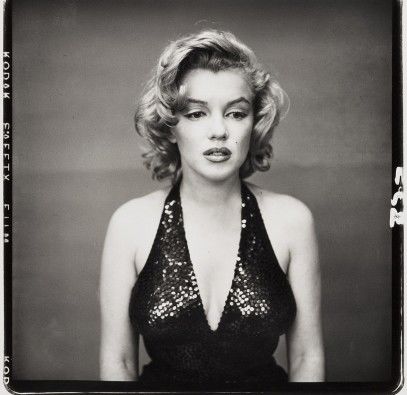 Richard Avedon
7/31 '15
Richard Avedon
7/31 '15
I have loved Richard Avedon since I lived in Pittsburgh and found his photos in a magazine (Rolling Stone, maybe) and felt like I was in the room with the subjects and they were looking at me. I bought a huge coffee table book of his work and hauled it around for years before sadly decluttering it (I don't like coffee tables because they collect stuff, and coffee table books don't fit on bookshelves).
When Avedon took portraits, he stood next to the camera, not behind it, so that the subject was looking at a human, not a lens. He fixed them with his intense gaze and got back an intimate portrait, a view of their soul, if you will. He got a genuine engagement, not just a pose. This is one of his most famous portraits - Marilyn Monroe, except not looking like a glamour shot, looking like a vulnerable human:

I found out recently that Avedon was Jewish (he died in 2004), and that an exhibition of his portraits was in Philly at the National Museum of American Jewish History, which is around 8 blocks from my job. The exhibit closes on Sunday, and I was determined to get there, so I took off half an hour early from work and speedwalked there in the rain so I could get half an hour in the Avedon gallery. The exhibit lives in Israel normally and Philly is the only United States location where it will be seen.
Entitled Family Affairs, the exhibit featured portraits that Avedon had taken of Allen Ginsburg and his family. Relevant to our other conversations, Ginsburg's father was a poet. The other part of the exhibit was a set of 69 portraits entitled, "The Family."
Rolling Stone tasked Avedon with election coverage leading up to the 1976 Presidential Election and paired him with a writer to do so. What he did, instead of illustrating articles, was to take 69 portraits of the people who he thought were relevant to the election, including many faces the public never saw. As an example of his perspective on history, of how visionary he was, he clearly did not take pictures of every politician, but he did photograph Ronald Reagan and George H. W. Bush (though Bush makes sense since he was the director of the CIA at the time). He photographed Jules Stein, the head of MCA Records, Donald Rumsfeld, Pete Rozelle (head of the NFL, creator of Monday Night Football), Jerry Brown, Ralph Nader, the head of the teamsters union, the head of the mine workers' union, Bella Abzug, Shirley Chisholm ...
Anyway, he photographed the power and the power behind the power. He saw the wheels turning inside the machine, he didn't just see what came out on the conveyor belt at the end of the line. My father also has that perspective, he looks at world events and sees the underlying issues and what is really at stake. I admire them both.

thank you.